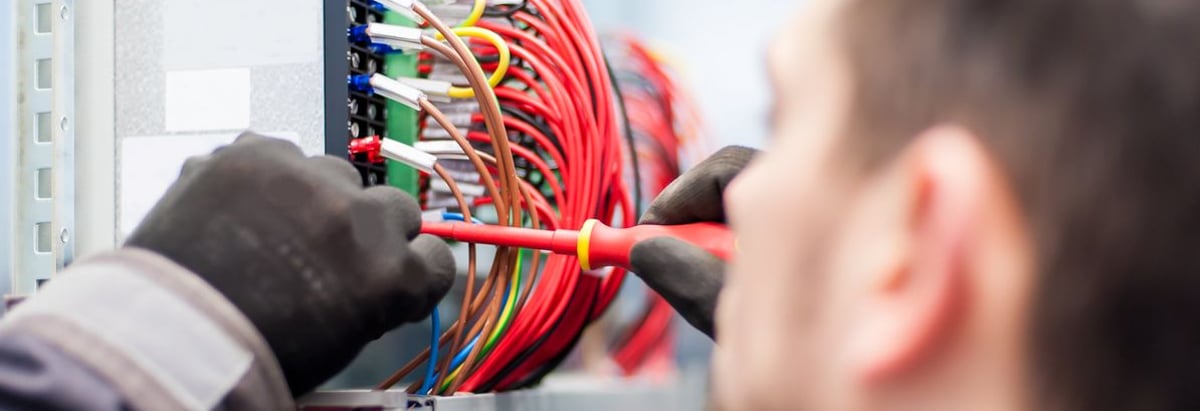Stock Analysis
- Japan
- /
- Electronic Equipment and Components
- /
- TSE:6971
Kyocera Corporation (TSE:6971) Stock Goes Ex-Dividend In Just Three Days

Some investors rely on dividends for growing their wealth, and if you're one of those dividend sleuths, you might be intrigued to know that Kyocera Corporation (TSE:6971) is about to go ex-dividend in just three days. The ex-dividend date is usually set to be one business day before the record date which is the cut-off date on which you must be present on the company's books as a shareholder in order to receive the dividend. The ex-dividend date is important as the process of settlement involves two full business days. So if you miss that date, you would not show up on the company's books on the record date. Thus, you can purchase Kyocera's shares before the 27th of September in order to receive the dividend, which the company will pay on the 5th of December.
The company's upcoming dividend is JP¥25.00 a share, following on from the last 12 months, when the company distributed a total of JP¥50.00 per share to shareholders. Last year's total dividend payments show that Kyocera has a trailing yield of 2.9% on the current share price of JP¥1711.00. Dividends are a major contributor to investment returns for long term holders, but only if the dividend continues to be paid. So we need to check whether the dividend payments are covered, and if earnings are growing.
See our latest analysis for Kyocera
If a company pays out more in dividends than it earned, then the dividend might become unsustainable - hardly an ideal situation. Kyocera paid out 70% of its earnings to investors last year, a normal payout level for most businesses. That said, even highly profitable companies sometimes might not generate enough cash to pay the dividend, which is why we should always check if the dividend is covered by cash flow. Over the last year, it paid out more than three-quarters (76%) of its free cash flow generated, which is fairly high and may be starting to limit reinvestment in the business.
It's positive to see that Kyocera's dividend is covered by both profits and cash flow, since this is generally a sign that the dividend is sustainable, and a lower payout ratio usually suggests a greater margin of safety before the dividend gets cut.
Click here to see the company's payout ratio, plus analyst estimates of its future dividends.
Have Earnings And Dividends Been Growing?
Stocks with flat earnings can still be attractive dividend payers, but it is important to be more conservative with your approach and demand a greater margin for safety when it comes to dividend sustainability. If earnings decline and the company is forced to cut its dividend, investors could watch the value of their investment go up in smoke. With that in mind, we're not enthused to see that Kyocera's earnings per share have remained effectively flat over the past five years. Better than seeing them fall off a cliff, for sure, but the best dividend stocks grow their earnings meaningfully over the long run. A payout ratio of 70% looks like a tacit signal from management that reinvestment opportunities in the business are low. In line with limited earnings growth in recent years, this is not the most appealing combination.
The main way most investors will assess a company's dividend prospects is by checking the historical rate of dividend growth. Since the start of our data, 10 years ago, Kyocera has lifted its dividend by approximately 9.6% a year on average.
To Sum It Up
Should investors buy Kyocera for the upcoming dividend? Earnings per share have barely grown, and although Kyocera paid out over half its earnings and free cash flow last year, the payout ratios are within a normal range for most companies. In summary, it's hard to get excited about Kyocera from a dividend perspective.
However if you're still interested in Kyocera as a potential investment, you should definitely consider some of the risks involved with Kyocera. Our analysis shows 1 warning sign for Kyocera and you should be aware of it before buying any shares.
A common investing mistake is buying the first interesting stock you see. Here you can find a full list of high-yield dividend stocks.
Valuation is complex, but we're here to simplify it.
Discover if Kyocera might be undervalued or overvalued with our detailed analysis, featuring fair value estimates, potential risks, dividends, insider trades, and its financial condition.
Access Free AnalysisHave feedback on this article? Concerned about the content? Get in touch with us directly. Alternatively, email editorial-team (at) simplywallst.com.
This article by Simply Wall St is general in nature. We provide commentary based on historical data and analyst forecasts only using an unbiased methodology and our articles are not intended to be financial advice. It does not constitute a recommendation to buy or sell any stock, and does not take account of your objectives, or your financial situation. We aim to bring you long-term focused analysis driven by fundamental data. Note that our analysis may not factor in the latest price-sensitive company announcements or qualitative material. Simply Wall St has no position in any stocks mentioned.
About TSE:6971
Kyocera
Develops, produces, and distributes products based on fine ceramic technologies in Japan, rest of Asia, Europe, the United States, and internationally.

